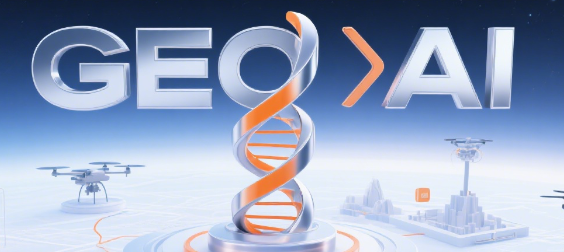GEO (Generative Engine Optimization) is a new content optimization method in the AI era, with the goal of getting your articles, web pages, or materials to be cited first when generative AI (ChatGPT, Gemini, Claude, Kimi, etc.) answers questions. Below I will use detailed steps + practical examples to help you get started with GEO optimization from scratch.
1. The core logic of GEO optimization
- AI citation method
- AI first retrieves information in the internal knowledge base or network according to user questions.
- the system will select content with high authority, clear structure, and clear semantics as answer materials.
- AI often quotes or paraphrases these paragraphs directly when outputting.
- GEO optimization goal
- to put your content at the top of the AI's candidate list.
- ensure that key information is fully presented when cited, leading to brand or traffic revenue.
- Difference from SEO
- SEO: optimizes the ranking of web pages in search engines, targeting human search users.
- GEO: Optimizes the citation probability of content in AI-generated responses, targeting AI content generation engines.
2. Five-step practical process of GEO optimization (including examples)
1. Determine user question scenarios
- : List the typical questions your target users may ask to the AI.
- Example:
- If you are a coffee training institution, users may ask AI:
- "What is the correct step for pour-over coffee?"
- "How do I choose the roast level of coffee beans?"
- "What is the difference between specialty coffee and regular coffee?"
- Operation: Enter these questions on platforms like ChatGPT, Gemini, Claude, etc., to see where the currently cited article comes from and in what format.
2. Keyword and question planning
- practices: organize core keywords, long-tail questions, and synonymous substitution.
- Example:
- core keywords: pour-over coffee, coffee beans, specialty coffee
- long-tail question: brewing method of hand-brewed coffee, how to choose coffee beans, definition of specialty coffee
- Synonymous substitution: drip coffee, pour-over techniques, coffee bean roasting options
3. Structured content creation
- practice: Write articles with a conclusion prefix + short sentence + Q&A module + semantic self-sufficiency.
- Example (Q&A format):
- Q: What are the correct steps for pour-over coffee?
- A: The correct steps for pour-over coffee include:
- Grinding: Use medium-coarse grinding with uniform particles.
- Pre-moistening: Wet the filter paper and drain the water to prevent paper smell.
- steaming: pour in 30g of hot water and let stand for 30 seconds.
- Sectional water injection: inject hot water in 2-3 times, with a total amount of about 250g.
- Complete extraction: The total time is controlled between 2 minutes and 30 seconds and 3 minutes.
- Each step here is an independent quotable short sentence, and the AI can directly capture one or all of them.
4. Enhance authority and credibility
- : Cite authoritative sources, ensure data authenticity, and update it regularly.
- Example:
- "According to the World Coffee Research Organization (WCR), medium roast beans offer a more balanced flavor when pour-over."
- "Definition of the Specialty Coffee Association (SCA): coffee with a score of 80 or more can be called specialty coffee."
5. Multi-platform testing and optimization
- practices: Test whether your article is cited on different AI platforms and analyze the specific paragraphs cited.
- Example:
- asking ChatGPT: "What is the correct step for hand-brewed coffee?" "
- If your content is referenced or paraphrased in your expression, the optimization is effective.
- If there is no citation, analyze the reasons (whether there is a lack of question-and-answer format, whether the conclusion is ambiguous, lack of authority, etc.), and then adjust the article.
3. Beginners are advised
- to choose a core topic first: don't cover it all at the beginning, but do a high-value Q&A content first.
- Start with a Q&A article: this structure is the easiest for AI to crawl and reference.
- Combined with SEO: Articles can both rank in search engines and appear in AI.
FAQs
Q: Do GEO optimizations require technical understanding?
A: No, the core is content writing optimization, but it works better with structured data (Schema).
Q: How long does it take for GEO optimization to see results?
A: The initial citation effect can be seen in 1-3 months, and continuous optimization can maintain the citation rate for a long time.
Q: Is it mandatory to do Q&A?
A: Not mandatory, but the Q&A format is the most AI-citation-friendly.




